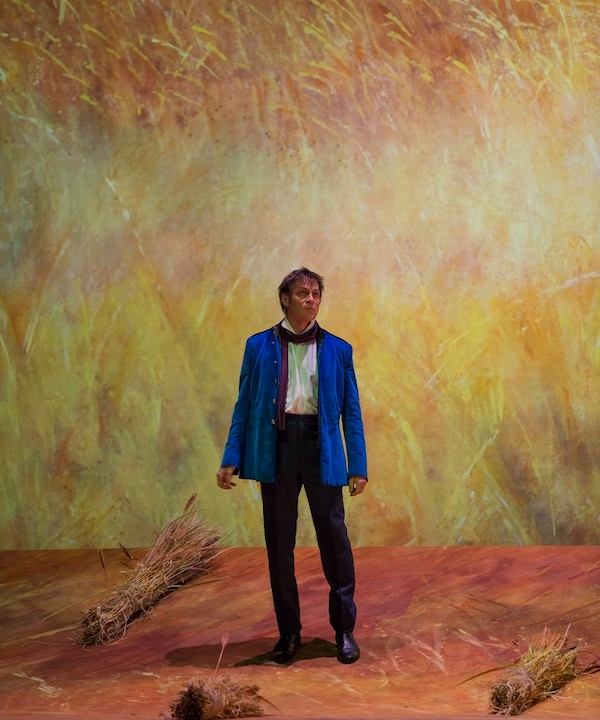If you want to know what’s so great about John Cranko’s choreography, look at the opening phrase of the final duet in Onegin (1965). The male dancer encircles the ballerina in an embrace that is not reciprocated, and then falls at her feet; she lunges forward to walk away from him, but her motion is counteracted by the downward and backward pull he performs while crouching on the stage behind her. It is sheer simplicity and sheer genius. The basic game of opposition and the use of gravity — at odds with ballet’s traditional aerial nature — encompass a unique range of emotions. She tries to escape her unhappy memories while fighting the alluring echoes of the passion for the one who rejected her, and now wants her — whether out of love, remorse or desperation.
If that were not convincing enough, check out Lenski’s danced monologue before the fatal duel, arguably one of the most beautiful and demanding male solos in ballet history. Here, verticality, traditionally associated with ethereal femininity, is used to portray the young poet’s desire to transcend his earthly troubles, and leave the ground on which he kneels and finally falls, with a twinge of rebellion and pain, feeling death’s imminent approach. In both cases, you do not need to know what Onegin is about. The final duet resonates with everyone’s memories of unhappy love, while the earlier male solo comments poignantly on the pointlessness of a young life cut short. And then you might want to match those movements against Pushkin’s poem — and, lo and behold, they do encapsulate some of the most memorable verses of Russian literature.
Cranko’s Onegin is indeed the quintessential example of what dance drama is and should be. As such, it requires dancers who are also good, if not excellent actors. Which is exactly what Marianela Nuñez, as the tormented Tatiana, and Thiago Soares, as the eponymous hero, are. I have often praised Nuñez’s ability to make any role perfectly credible and theatrically vibrant. And her long-awaited Tatiana is no exception, for she takes full advantage of the many interpretative possibilities that Cranko’s choreography offers to the discerning artist. Her much-praised, diamond technique allows her to tackle the most difficult choreography with ease, leaving room to concentrate on the psychological shadings of the part. Not many ballerinas can show a crescendo of emotions through the repeated and physically demanding lifts in the bedroom duet as well as she does.
Next to her Soares is possibly one of the most ideal Onegins ever seen. His acting abilities bestow rarely seen depths to the character, which grows dramatically out of the far too frequently seen stereotypical and two-dimensional cynic. His Onegin is the perfect incarnation of Romantic pessimism and dissatisfaction, cleverly mixed with an irresistible magnetism and a few strokes of youthful, languorous yearning. Such a concoction brings the character fully to life; he certainly is the sombre Romantic anyone might fall for, and the perfect complement to his ebullient and equally Romantic friend Lenski. The last named was interpreted by Valentino Zucchetti, another artist one can only rave about. Zucchetti’s understanding of the meaning of each movement is truly splendid, as is his technical rendition.
The rest of the cast, with a wonderfully flighty Cristina Arestis as Olga, was also good, even though the corps de ballet looked a bit lacklustre at times next to such incandescent stars. I do hope Nuñez’s and Soares’s performance will be filmed, for a record of their Onegin ought to be kept for posterity.






Comments